January 26th, 2018
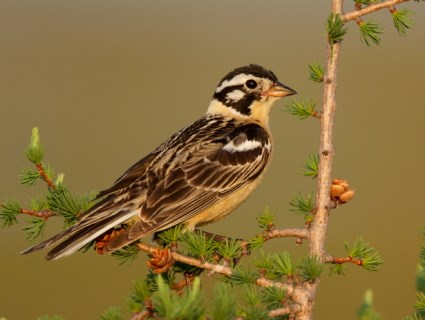
Smith’s Longspur, Breeding male www.allaboutbirds.org. © Andy Johnson, MB, Churchill, July 2012
This is Passport to Texas
The Smith’s Longspur, a subarctic songbird, is the ultimate “snowbird”. It travels from Alaska and Canada to Northeast Texas where it spends the winter months.
It’s remarkable migration for a little bird the size of a chickadee. And he flies all the way by himself; he’s been doing this for millennia.
Ornithologist, Cliff Shackelford says based on winter surveys, this grassland species is in decline.
Parks and Wildlife has a project where we go out and we survey for Smith’s Longspurs. There’s several staff involved where we go out every winter and we spend several days looking for Smith’s Longspurs, and talking to landowners. We’re trying to encourage them to leave native prairies for these species, and to be on the receiving grounds for this really neat wintering bird.
Changes in land use can cause a reduction in habitat for this migrating bird.
My hope for the Smith’s Longspur is that it could be with Bobwhite and other grassland birds, poster children for protecting prairies and protecting them in big swaths. A lot of these grassland birds need a lot of real estate. So, we can’t just do two acres here and five acres there. It needs to be hundreds and hundreds, if not thousands of acres, for these birds to survive.
Landowners are key to the future of the Smith’s Longspur and other native grassland species.
The Wildlife Restoration Program supports our series.
For Texas Parks and Wildlife…I’m Cecilia Nasti.
Posted in Birding, Wildlife and Sport Fish Restoration Program | Comments Off on Smith’s Longspur in Decline in Texas
January 25th, 2018
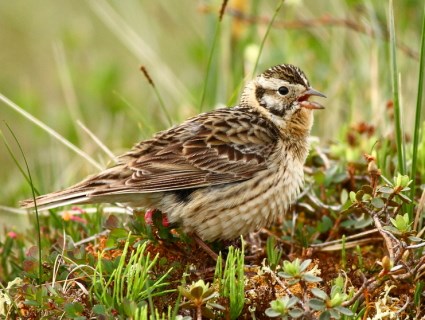
Smith’s Longspur, breeding female. www.allaboutbuirds.org. © Andy Johnson, Churchill, Manitoba, Canada, July 2011
This is Passport to Texas
Texas is the place to see migrating bird species in the winter months. Just be prepared for seasonal changes in their plumage. The Smith’s Longspur, for example, is usually a brightly patterned songbird.
In the winter, they lose their bright, breeding plumage and they become very drab.
Ornithologist, Cliff Shackelford says another factor that makes this species somewhat of a challenge to spot is that it lays low.
They’re grassland skulkers, meaning: they don’t sit up on fence posts or limbs very often, or at all. They really like to sit on the ground in the grass.
Their drab winter feathers make them even harder to spot in the dry brown grasses. But it can be done—if but for a moment.
So, the way to see a Smith’s Longspur is to be in the right part of the state. Maybe Hunt county; that’s a really good place. And, if you had the right grass at the right height—about ankle deep—you’ll kick ‘em up. And there’ll be 50 to 500, and they’ll fly, and they make a rattling sound. That’s really all you get. You don’t really get to look at them very well. When they land back down in the ground near you, they are in the grass and very hard to see.
A decline in the Smith’s Longspur in Texas…that’s tomorrow.
The Wildlife Restoration Program supports our series.
For Texas Parks and Wildlife…I’m Cecilia Nasti.
Posted in Birding, Wildlife and Sport Fish Restoration Program | Comments Off on Get to Know the Smith’s Longspur
January 24th, 2018
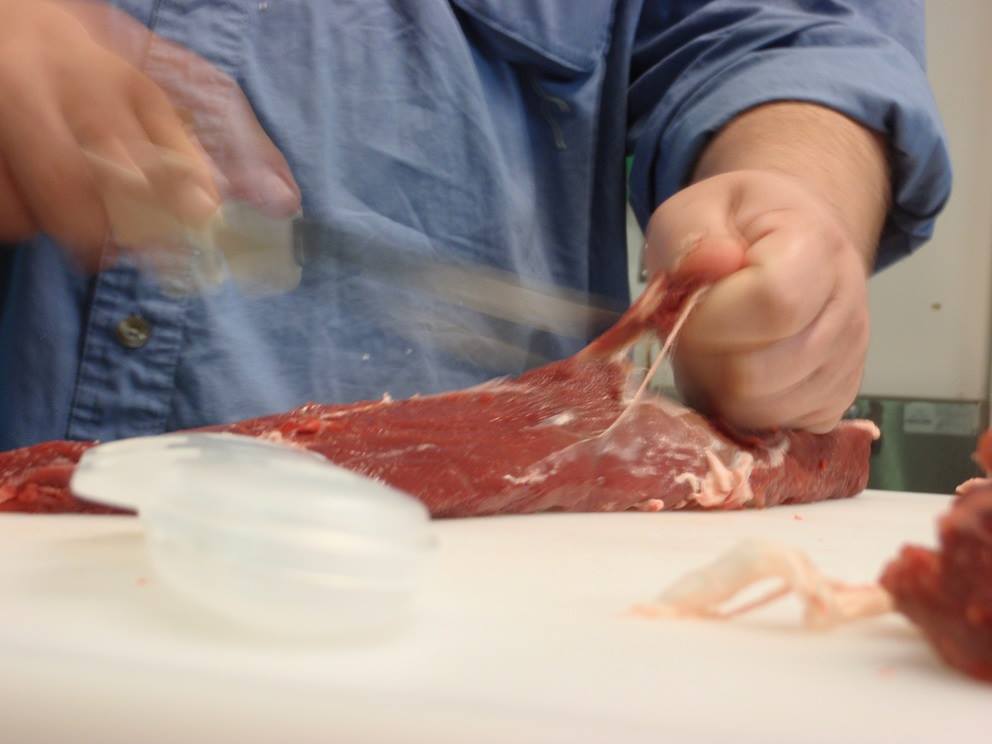
Processing venison.
This is Passport to Texas
If you take a pass when offered wild game and fish because you think it tastes funny…
Most wild game and fish, if it’s off-tasting, is ruined between the kill and the kitchen, and not in the kitchen, itself.
Susan Ebert is a hunter, angler, forager and cook; she wrote the book Field to Table, a guide to growing, procuring, and preparing seasonal foods—including wild proteins.
As good as the recipe might be, unless people know how to care for that game from the time it’s harvested, to the time that they’re ready to cook with it, they’re going to be disappointed with the results.
A clean kill, proper field dressing and getting everything on ice as soon as possible is vital. Once you have the meat at home…
Venison and wild duck—I will dry age those. Maybe 48 hours. Set them over a drip pan, on a rack. And let them just dry age in the refrigerator uncovered, with air circulating around them.
Ebert recommends brining rabbit and feral hog; brine can be as simple as sugar and salt dissolved in water.
Let that brine for a couple of days. Then, sear it over the grill and then either move it over indirect heat or put in it the smoker at a low temperature…
Until it is succulent. Find wild game and fish recipes on the Texas Parks and Wildlife website.
That’s our show for today… Funding provided in part by Ram Trucks. Guts. Glory. Ram
For Texas Parks and Wildlife…I’m Cecilia Nasti.
Posted in Duck, Food, Venison | Comments Off on Reducing “Gaminess” in Game
January 23rd, 2018
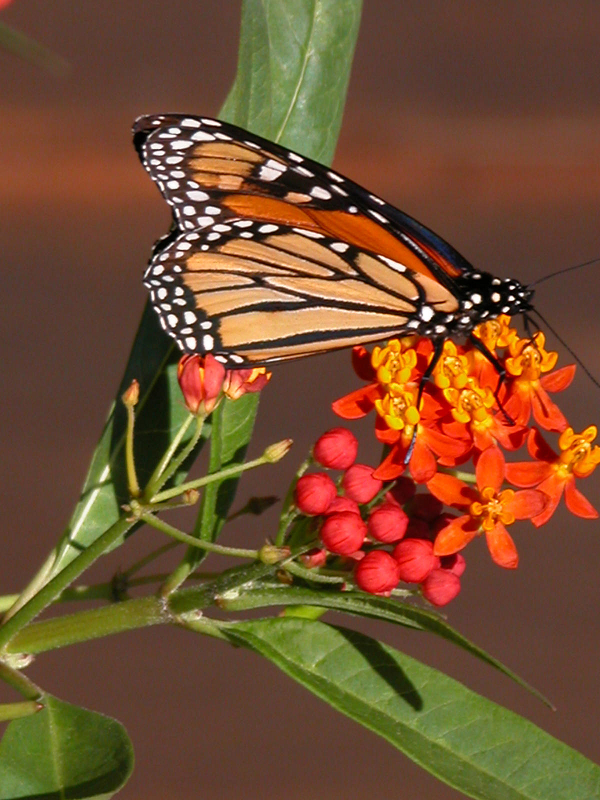
Monarch on milkweed.
This is Passport to Texas
Why are monarch butterflies declining?
The current thought is that it is actually several different factors that are contributing to the decline that we’re seeing.
Ben Hutchins is TPW’s invertebrate biologist. Deforestation of their winter roosts in Mexico, cold winters, and prolonged drought along their migration path, has had negative effects.
And then, finally, what this project is addressing is this widespread decline in availability of milkweed plants. That’s due to a couple things: predominantly increased use of certain herbicides.
Texas Milkweeds and Monarchs is a citizen science project where folks keep an eye out for the state’s 37 different species of milkweeds –vital to the monarch’s lifecycle – and then then share observations on iNaturalist.org.
We have experts that are going to be looking at these observations and identifying those.
Hutchins says more than a thousand contributors have logged more than seven thousand observations of all 37 milkweed species. Texas Parks and Wildlife also has guide to Texas milkweeds to help you ID the plants.
It is available online, [with] pictures of all of the different species of milkweeds, distribution maps—to let you know if you’re in the right part of the state—and also some of the key characteristics.
Find it on the Nature Trackers page of the Texas Parks and Wildlifewebsite.
The Wildlife Restoration program supports our series.
For Texas Parks and Wildlife…I’m Cecilia Nasti.
Posted in Botany, Habitat, Migration, Monarchs, Pollinators | Comments Off on Citizens Monitor Monarchs
January 22nd, 2018
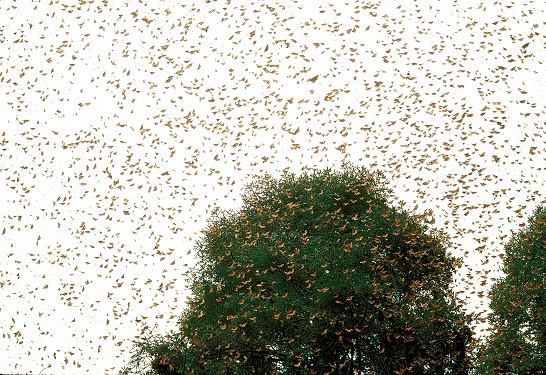
Monarchs at their overwintering site in Mexico.
This is Passport to Texas
Monarch butterflies, which are beautiful, are declining. Yet, they’re not especially good pollinators, or a significant food source for other critters. So, is being pretty reason enough to save them?
I think it’s important not to deemphasize how important this is. If you’re ever out on a Texas river in the fall, and you have hundreds or thousands of monarchs coming through – that’s a fabulous natural phenomenon.
You make a good point Ben Hutchins. Ben is Texas Parks and Wildlife’s invertebrate biologist. He says the insects have a practical value in Mexico where they overwinter.
Overwintering monarchs are a really important source of economic income as tourists come from around the world to see them.
Conserving monarchs also benefits other Texas species.
Monarch conservation, benefits a whole suite of other species. So, for example, if you’re managing a landscape to benefit monarchs, you’re also going to be benefitting many other pollinators. They also benefit a host of larger species. For example, if you’re managing habitat – keeping it open as a prairie or savannah – that’s going to be benefitting upland bird species like quail; so there’s really an economic incentive of for being conscious of monarchs when we’re managing landscapes.
Who knew, right? Tomorrow: a citizen science project to help monarchs.
The Wildlife Restoration program supports our series.
For Texas Parks and Wildlife…I’m Cecilia Nasti.
Posted in Botany, Conservation, Migration, Monarchs, Wildlife and Sport Fish Restoration Program | Comments Off on Managing for Monarchs







 Passport to Texas is a
Passport to Texas is a  Passport to Texas is made available by:
Passport to Texas is made available by: